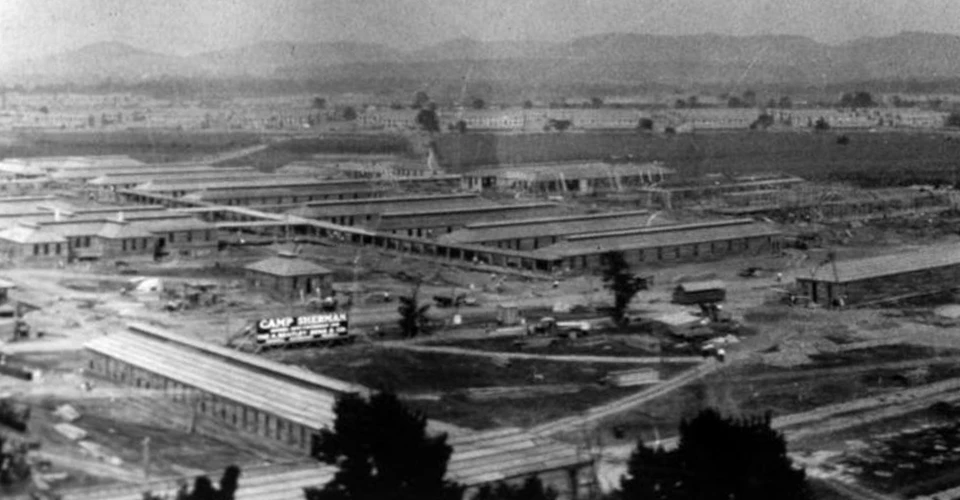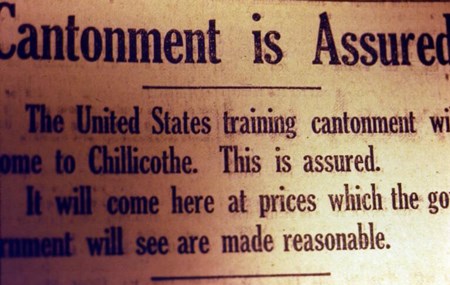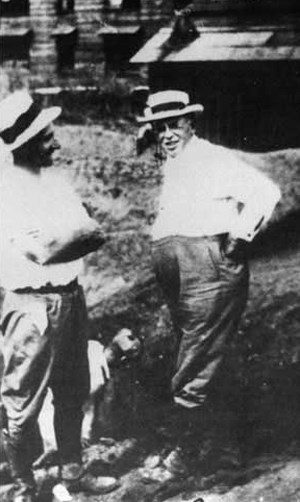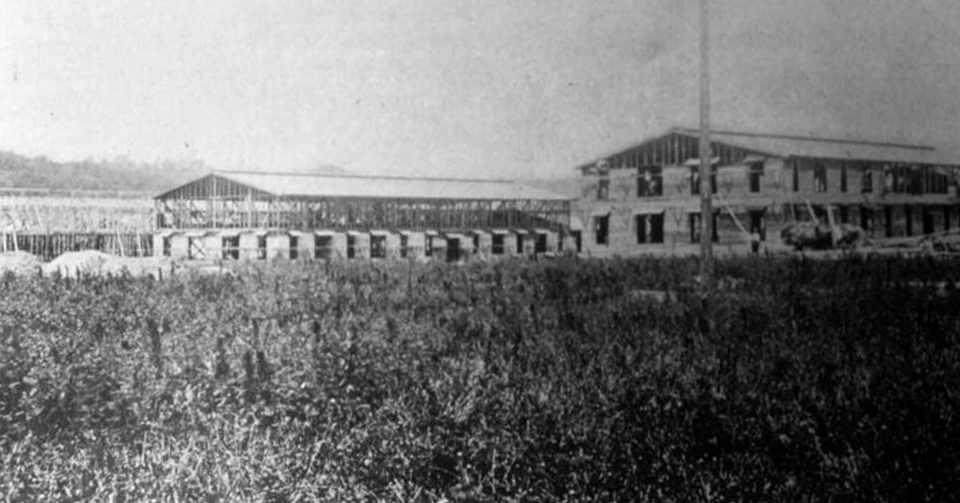"We will construct the buildings in such a way on the mounds that they will not be destroyed. However, it will be necessary to run pipe lines through some of the mounds." Camp Commander, Captain Ward Dabney, 1917
Article
The Birth of Camp Sherman

NPS Photo

NPS Photo
A Declaration of War
April 6, 1917. A date that bears significance for the city of Chillicothe, as well as the nation. Congress formally declared war on Germany and thrust the United States into the first World War. As a result, rapid mobilization was required to get ordinary men trained into battle-ready soldiers as war was already raging in Europe, and had been since 1914. Since Chillicothe had already been host to previous military facilities such as Camp Logan during the Civil War and Camp Bull during the War of 1812, it was an obvious choice to host another such facility. This time though, the area would be host to an establishment that would swell the local population from 16,000 to 60,000 in just a matter of a few months. While farmers initially resisted the War Department's efforts to build an Army Cantonment, local businessmen saw the promise of increased revenue and contributed to the government's offer which raised it to $20 per acre. Not all were persuaded by this tempting price, but eminent domain was exercised and landowners relinquished, albeit begrudgingly. In June of 1917 the War Department officially announced that Chillicothe would become home to one of the new Army cantonments. It would become known as Camp Sherman, named after the famed Union Army Civil War General, William Tecumseh Sherman.

NPS Photo
Construction
Since war was already underway in Europe, time was of the essence to get Camp Sherman built as quickly as possible. Two thousand buildings would be erected between June of 1917 and September of 1917 on nearly two thousand acres of land that the War Department had purchased. Included in that tract was the isolated parcel of land containing the Mound City Group. Construction crews of up to five thousand men would race to build these buildings which included two-story wooden barracks that would be situated throughout the area, including on top of the Mound City Group. So efficient were these crews that they would often complete a building in twenty minutes. Had it not been for the insightful intervention of the Ohio Historical Society's Henry Shetrone, William Mills and a local Chillcothean amatuer Archeologist named Albert C. Spetnagel, the mounds of Mound City Group may have become victim to the reckless efficiency of the construction crews. Shetrone and colleagues convinced the Army to construct their barracks in a way that would not cause irreperrable harm to the mounds and the site. After meeting with Army officials, an agreement was struck that would have one barrack turned perpendicular in relation to all of the other barracks so as to not completely destroy the great Central Mound, the largest mound of the group.
Fortunately, construction methods at the time eased the destruction of the mounds as well. Barracks buildings were erected on posts that elevated the bottom floor about three feet above the surface. If a barracks were to be built on the spot of a mound, the mound would wind up losing the upper part of its earthen core, but the most important feature of the spot, the underground burial and mortuary items, were left intact. While this alleviated some of the destruction, the posts that were driven in to support the elevated floor would still cause damage to the mound and to whatever may lie in its path as it was driven into the ground. Even though the Army agreed to do as little harm to the area as they could, some smaller mounds were severely damaged or destroyed by pipelines, roads and narrow guage railroad lines. After three months of construction within the two thousand acres of newly-acquired federal land, the first draftees would arrive to begin their transformation from civilian to soldier in late fall of 1917.

NPS Photo
Last updated: November 6, 2017
